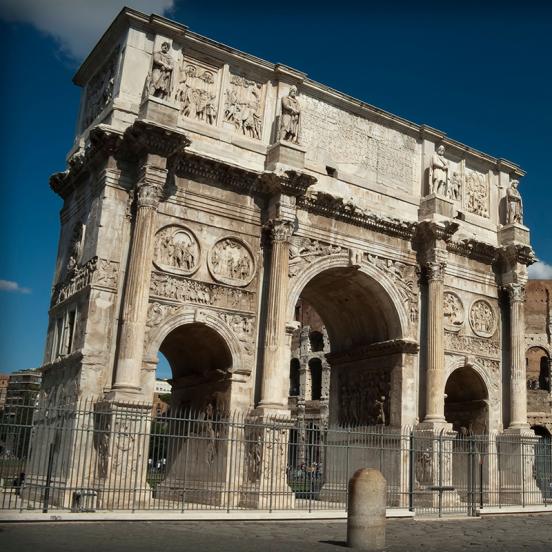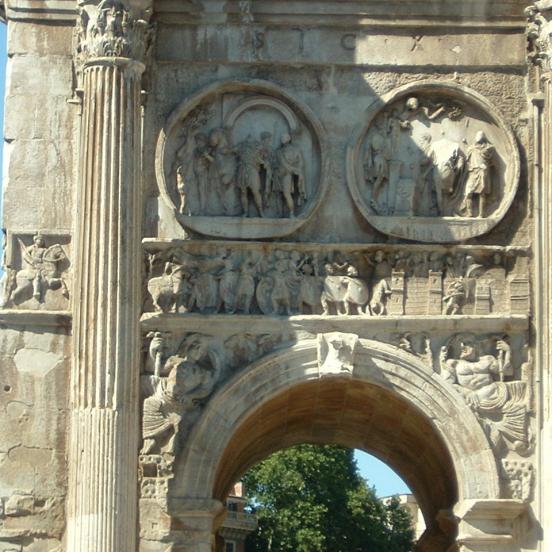The triumphal arch of Constantine
After Constantine I (the Great) had occupied Rome in 312 and defeated Maxentius, his opponent in the struggle fought for the western part of the empire, a new situation developed. With a triumphal arch for the emperor, the senate commemorated a victory in a civil war which had involved defence of the Empire not against an external but an internal enemy. Constantine was not even entitled to hold the otherwise usual triumphal procession (triumphus). The triple-arched triumphal arch erected in his honour was built near the Colosseum and at the time there were statues also on the top. It was mostly decorated with elements from earlier rulers’ monuments; only the narrow frieze above the arch openings was sculpted as new. The aim of incorporating sculptural ornaments made at the time of Trajan, Hadrian and Marcus Aurelius must have been to depict Constantine as having the imperial virtues of the great ancestors: heroism, strength, courage, generosity and piety. The heads of the earlier emperors were recarved in Constantine’s portrait. The newly made frieze narrates how Constantine became the ruler of Rome, from the beginning of the military campaign launched against Maxentius, through the decisive battle and the oration held at the Forum Romanum, to distribution of gifts in a basilica.


